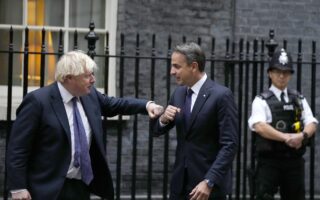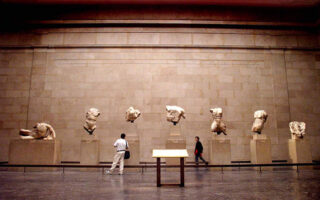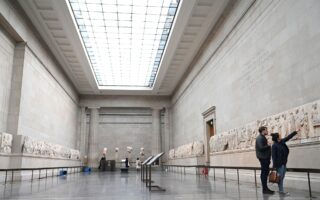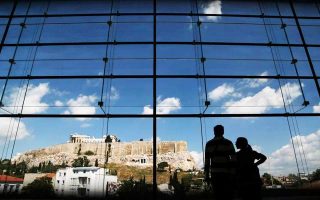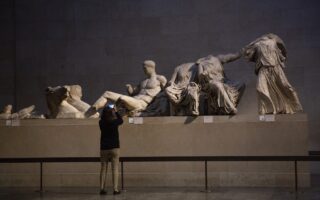The Parthenon Sculptures – now that the British Museum has lost its charm
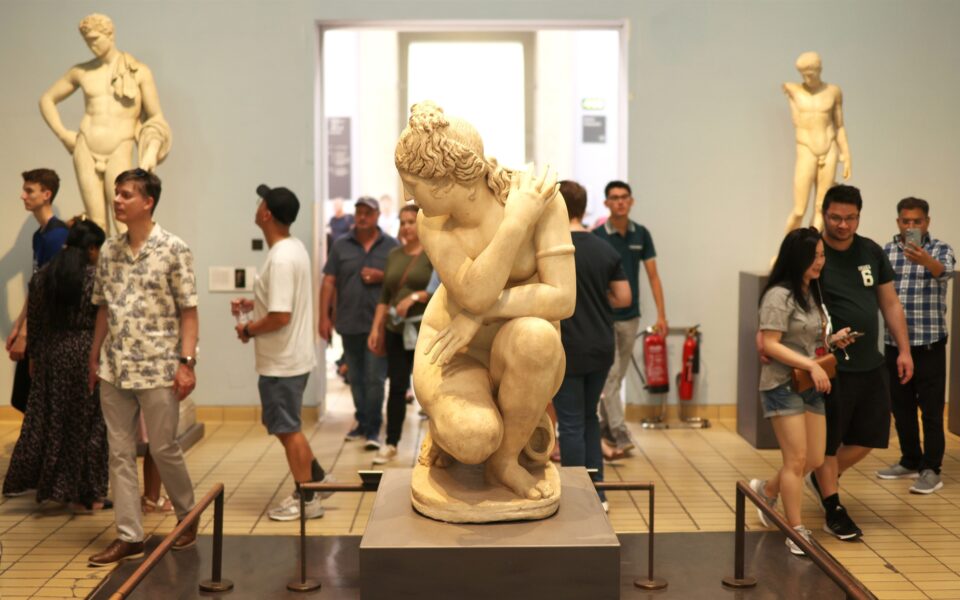
In the 1937 movie “A Damsel in Distress,” Fred Astaire sang for the first time Gershwin’s song “A Foggy Day (in London Town).” Two lines in the lyrics, “I viewed the morning, with much alarm / the British Museum had lost its charm,” suddenly became very timely when, in late August, it became known that more than 2,000 items had been stolen from the British Museum over a long period of time. As early as 2021, the Danish scholar and antiquities dealer Ittai Gradel had warned the British Museum about items from its collections being sold by private persons, but the museum chose not to view the matter “with much alarm.” A rude awakening came two years later. To make the museum’s public humiliation complete, it became known that, in the weeks that followed the discovery of the theft, the museum was unable to determine how many and which objects had been stolen.
Schadenfreude is the expected reaction in countries which have seen their claims for the return of objects of their cultural heritage being arrogantly dismissed by the museum’s leadership, with the argument that the British Museum offers them safety. Yet, those who care about culture cannot gloat; they are filled with sadness whenever objects of world culture become the property of collectors in an illegal way – theft, illicit trade of antiquities, or clandestine excavations. Let us call a spade a spade: Just as guilty as the thieves and poachers are the voracious private collectors who encourage them. Some well-known Greeks belong to this category.
The serial theft was a major blow to the British Museum’s credibility as a repository of monuments. In the UK, the chair of the all-party parliamentary group on African reparations immediately called for a change to the 1963 law that prohibits the return of objects such as the Benin bronzes. Labour MP Bell Ribeiro-Addy said: “One of the most insulting reasons that they’ve given is that the other countries that these items belong to would either not be able to take care of them or they are likely to be stolen. But you’ve got people in this country putting them on eBay.”
Will this development affect the demand for the reunification of the Parthenon Sculptures? Possibly, although the two issues are not linked. The main argument for the reunification of the Parthenon Sculptures in the Acropolis Museum is the moral obligation to reunite a mutilated whole and to exhibit these unique architectural sculptures in the place where they were created and within sight of the architectural monument that they adorned. The reunification of the Parthenon Sculptures would be imperative even if the British Museum had been unscathed by security issues.
The only morally acceptable solution is donation; not exchange, loan, gradual reunification, or conditional possession
However, the museum’s loss of prestige should not lead the Greek side into the trap of a hasty agreement. If the British Museum, from a position of weakness, makes the tactical move of offering the sculptures for loan or exchange, Greece should not be tempted. The only morally acceptable solution is donation; not exchange, loan, gradual reunification, or conditional possession. It is the model applied in 2006 with the return of a piece of the Parthenon frieze from the University of Heidelberg and, more recently, with the donation of three fragments from the Vatican to the archbishop of Athens, who then transferred them to the Acropolis Museum. The act of donation, the unconditional and permanent transfer of the fragments to the Acropolis Museum, saves the British Museum from questions about the legality of their possession ever since they acquired them. This form of “return” does not create a precedent for other items in the museum’s collections; not only does it protect the British Museum, but it also re-establishes its prestige after its recent humiliation. Only after the British Museum has donated the sculptures to the Acropolis Museum can the Greek government enter into an agreement of cooperation for temporary exhibitions in the British Museum of artifacts from regional Greek museums. Cooperation after the donation is not a transaction, but a long-term strategy for culture. It is a win-win scenario.
The Greek strategy concerning the reunification of the Parthenon Sculptures should not change in view of the theft. It must emphasize the universal significance of the Parthenon as an integral work of art, not the significance of the sculptures as exclusively Greek cultural heritage. The reason is simple: After 200 years in non-Greek collections, fragments of the Parthenon Sculptures are claimed to be part of the cultural heritage of the countries that currently possess them. In January 2023, the then British culture secretary Michelle Donelan said so indirectly: “This is where they belong, in the UK, where we have looked after them for a long time and where we have made them accessible.” The same argument was put forward by the House of Wittelsbach, the dynasty that ruled the Kingdom of Bavaria, concerning two fragments that are in the Staatliche Antikensammlungen in Munich. Originally part of the collection of Edward Dodwell, they were acquired for the royal collection by Ludwig I. One fragment has been identified as the hand of a rider, the other as the left leg of a centaur on one of the metopes. In February 2007, I sent a letter to Franz, Duke of Bavaria, the head of the House of Wittelsbach, urging him to allow these fragments to join the sculptures to which they belong. The Wittelsbacher Ausgleichsfonds (Compensation Fund) declined. As stated in a letter dated June 28, 2007, “the collections of King Ludwig I represent in their extent and above all in their totality a high ideal value for the Wittelsbacher Ausgleichsfonds, for the House of Wittelsbach, and for the history of our country, which we are obliged to preserve.” Clearly, such arguments have no value in the face of the possibility of finally restoring a mutilated monument of world cultural heritage. It is high time that the British Museum did the right thing. Reunite them!
Angelos Chaniotis is professor of ancient history and Classics at the Institute for Advanced Study, Princeton.
